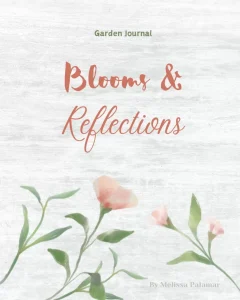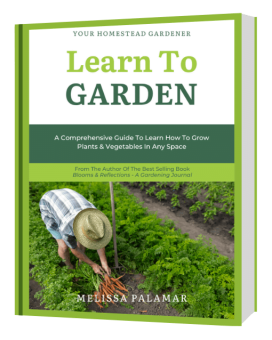
Disclosure: Your Homestead Gardener is a participant in the Amazon Services LLC Associates Program. I earn from qualifying purchases. This means that if you click on a link and make a purchase, I may earn a small commission at no extra cost to you. Thank you for supporting Your Homestead Gardener!
To Buy or Make Your Own Garden Soil
As the gardening season kicks into high gear, the perennial question of “What type of soil should I buy?” seems to be on everyone’s lips. However, I can’t help but feel that bags of soil are not what they used to be. It’s as if the market has transformed into a confusing landscape of products, each claiming to be the ultimate solution for your garden.
Personally, I’ve opened bags of soil only to be greeted by unexpected surprises – shards of plastic or soil covered in mold, rendering it utterly unusable. It’s disheartening to think that what was once a straightforward purchase has become a maze of marketing gimmicks.
In light of these experiences, I’ve come to the conclusion that making your soil just makes more sense. Crafting your own blend isn’t as challenging as it may seem, and it ensures that you have control over what goes into your garden. It’s time to demystify the soil-buying process and embrace the simplicity of creating your own soil instead.
The Marketing Maze
Walk into any gardening store, and you’re bombarded with an array of soil options, each claiming to be the perfect match for your plants. But truth be told, these distinctions are often minimal, and the price differences don’t always reflect the actual benefits. It’s easy to fall for the marketing hype, but when it comes down to it, plants only need essential nutrients, regardless of the fancy label.
It’s crucial to recognize that plants fundamentally require three essential nutrients: nitrogen, potassium, and phosphorus. These elements, often abbreviated as NPK, play pivotal roles in various aspects of plant growth. Nitrogen is essential for leafy, green growth, promoting the synthesis of proteins and enzymes. Potassium supports overall plant health, aiding in disease resistance, water uptake, and nutrient transport. Phosphorus is crucial for root development, flowering, and fruiting. While some bagged soils boast an array of additives, it’s important to sift through the marketing haze and focus on the core nutrients that truly matter for your plants’ well-being.
Mycorrhizae Benefits
Mycorrhizae additives have become increasingly popular in bagged soils, and for good reason. These beneficial fungi form a symbiotic relationship with plant roots, enhancing nutrient absorption and overall plant health. Many commercially available soils now include mycorrhizae to boost the performance of potted plants.
However, nature provides a cost-free alternative. In natural ecosystems, mycorrhizal networks thrive in the soil, forming connections with plant roots. Gardeners can harness this resource by incorporating well-aged, undisturbed forest soil, logs, or leaf litter into their garden beds. This not only introduces mycorrhizae into the soil but also adds a diverse range of beneficial microorganisms that contribute to a thriving and balanced soil ecosystem. Embracing the natural wealth of mycorrhizal fungi not only benefits plant growth but also aligns with sustainable and cost-effective gardening practices.

The Only Garden Journal You'll Ever Need!
Embark on a journey through the seasons with ‘Blooms and Reflections‘ your companion in cultivating the garden of your dreams. This beautifully crafted gardening journal unfolds over 91 pages, offering a comprehensive space for all your gardening aspirations and practical needs.
The DIY Solution
Listen, after years of trial and error, I’ve found that creating your own soil is not really cost-effective but it does ensure you have complete and total control over what goes into it. Begin with topsoil sourced from a reliable local supplier as your base – it’s the foundation for a thriving garden. To this, add compost (even if it’s not fully broken down yet), add sand, manure, and some perlite. Then add other amendments to tailor the soil to your plants’ specific needs. Below I have noted the basic ratios for creating your own soil.
Recipe for Nutrient-Rich Garden Soil
– 4 parts topsoil
– 2 parts compost
– 1 part sand
– 1 part well-rotted manure
– Optional: 1/2 part perlite for improved drainage
– Optional, but highly recommended: 2 parts logs, forest soil, or aged leaf litter to add mycorrhizal fungi
Mix these components thoroughly, and you’ll have a customized, nutrient-rich garden soil ready to support your plants throughout their growth.
The True Cost of Homegrown Soil
While creating your own soil may not be the most economical solution upfront, consider it an investment in the long-term health of your garden and, ultimately, in your well-being. When you grow your own food, it’s important to know exactly what your plants are being fed. This ensures you have full control over the quality of the food you produce.
Conclusion
In the soil saga, it’s easy to get lost in the maze of options. However, my journey has led me to believe that creating your own soil is the most empowering and beneficial choice for any gardener. By foregoing the marketing ploys and taking matters into your own hands, you gain a deeper connection with your garden. So, roll up your sleeves, mix up a batch of garden soil, and savor the fruits of your labor – both in your garden and on your plate. After all, there’s nothing quite like knowing exactly what you’re feeding your plants and, in turn, have the peace of mind that you are providing the highest quality foods for yourself and your family.
~Happy gardening!~

Want to learn how to grow like a Pro?
Unlock the secrets of a thriving garden! Enter your email below to get your FREE copy of ‘Learn to Garden‘ the essential guide that turns budding enthusiasts into green-thumb maestros. Let’s cultivate your gardening journey together, one leaf at a time!



